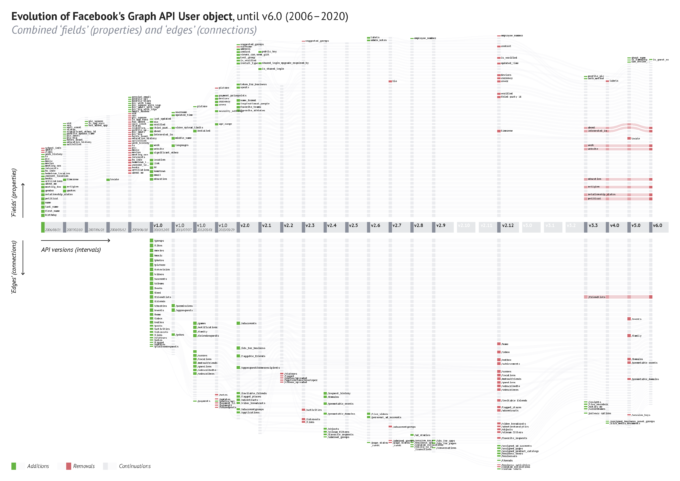Application programming interfaces (APIs) are not merely technical objects for data access but have evolved into complex governance arrangements. We examine the relationship between the ‘technicity’ of platform governance–”governance of and by APIs–and the material conditions of a platform’s power.
A new open access article by Fernando van der Vlist, Anne Helmond, Marcus Burkhardt, and Tatjana Seitz in Social Media + Society.
![Figure 3: Geographical distribution of [COVID-19]-related Android apps by country or region. Illustration: authors and DensityDesign Lab.](https://www.annehelmond.nl/wordpress/wp-content/uploads//2022/05/Figure-1-landscape-–-Evolution-of-Facebooks-Graph-API-Reference-until-v6.0-2006–2020-300ppi-680x481.png)
Abstract
Researchers, policymakers, and competition and regulation authorities worldwide recognize the utility of application programming interfaces (APIs) in powering the digital economy and driving datafication and platformization processes. However, it remains unclear how the APIs of leading social media relate to platform governance and how this relationship evolved. This article traces the evolution of Facebook’s APIs, which evolved from a relatively simple programming interface for data access into a complex layered and interconnected governance arrangement. The study draws on a large corpus of (archived) developer pages and API reference documentation to examine the history of Facebook’s API governance; that is, the governance of and by Facebook through its APIs. This historical analysis emphasizes the technical dimensions and dynamics of what, how, and whom powerful platforms seek to govern, thus highlighting the technicity of platform governance and how it evolved. Because APIs facilitate and govern the material conditions of app development and the social and economic processes they sustain, powerful platforms influence the evolution of their larger ecosystems. As such, the technicity of Facebook’s API governance represents a major source of the platform’s “infrastructural power”.

Acknowledgements
The authors thanks Angeles Briones (DensityDesign Lab, Polytechnic University of Milan) for information visualization assistance during the research process, and the Center for Advanced internet Studies (CAIS) for funding and hosting our working group. They also thank José van Dijck, Tobias Blanke, Thomas Poell, and the anonymous reviewers, whose constructive feedback improved the article.
Data availability
The data that support the findings of this study are openly available in the Open Science Framework (OSF) at https://doi.org/10.17605/ osf.io/wfxyp. Additionally, PyCatFlow (a Python package for visualizing categorical time series data used to create Figures 4 and 5) is available at https://doi.org/10.5281/zenodo.5531785.
Read the full article: van der Vlist FN, Helmond A, Burkhardt M, et al. (2022) API Governance: The Case of Facebook’s Evolution. Social Media + Society 8(2). DOI: 10.1177/20563051221086228.